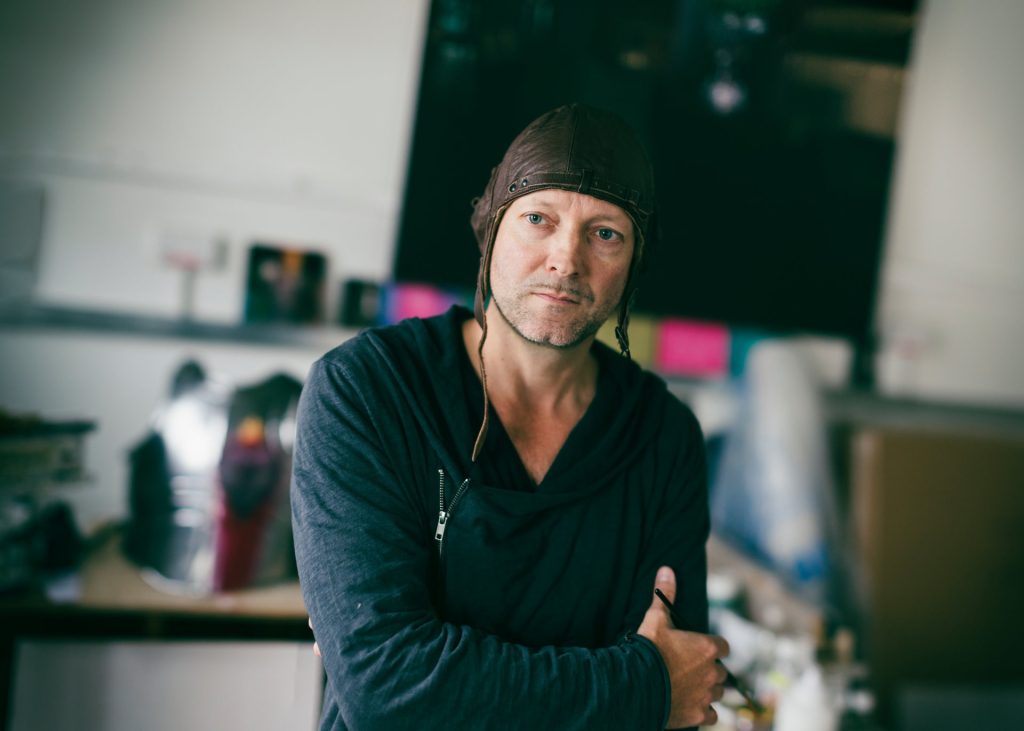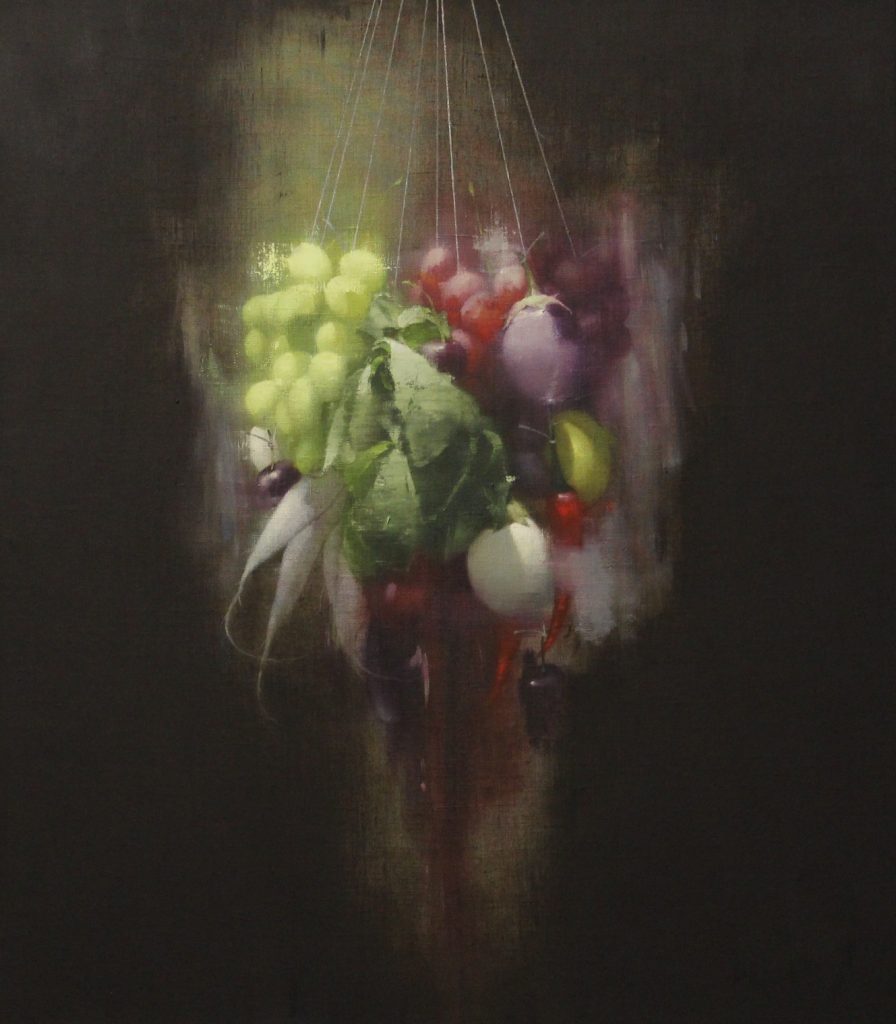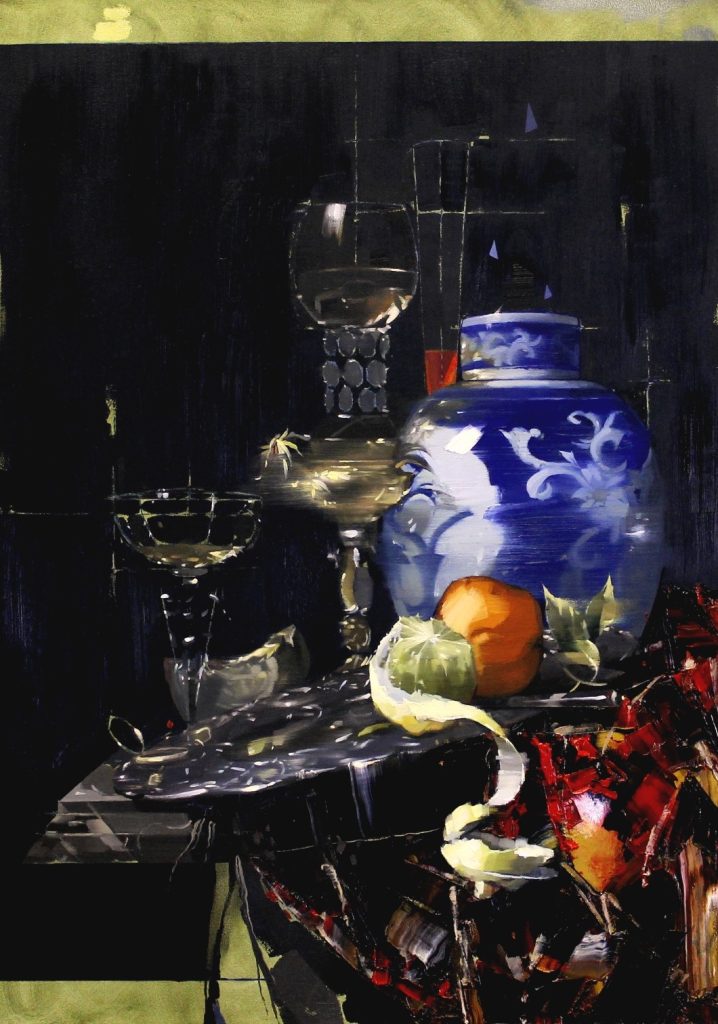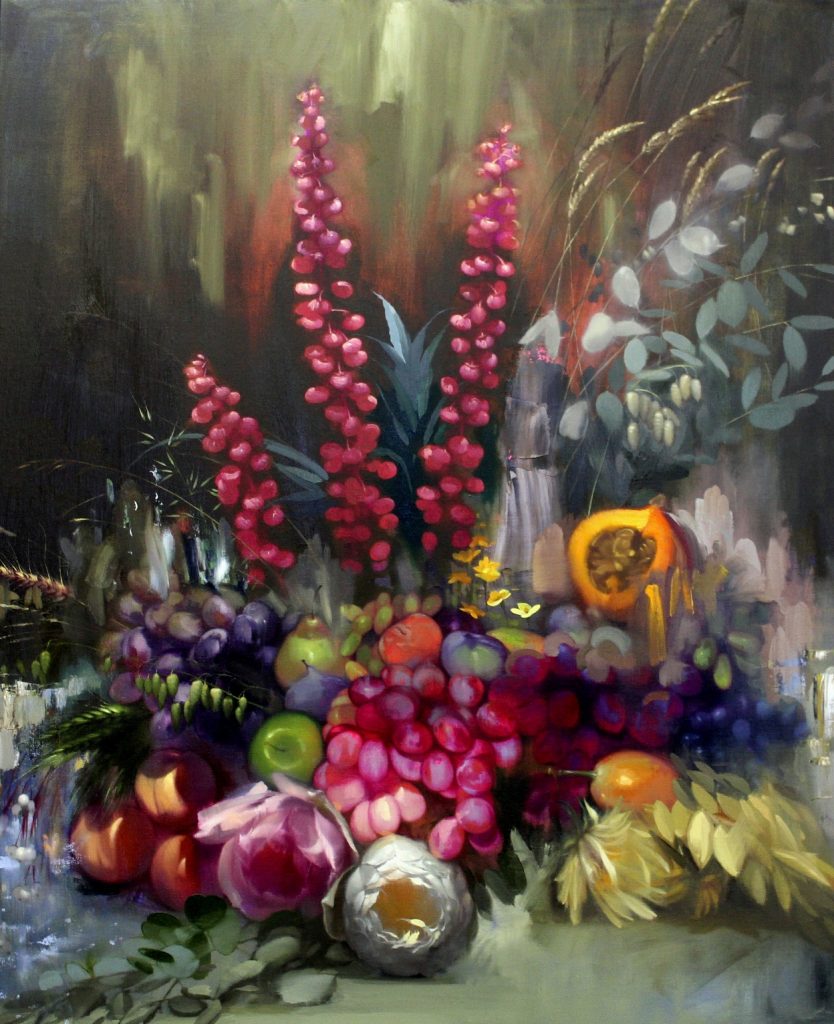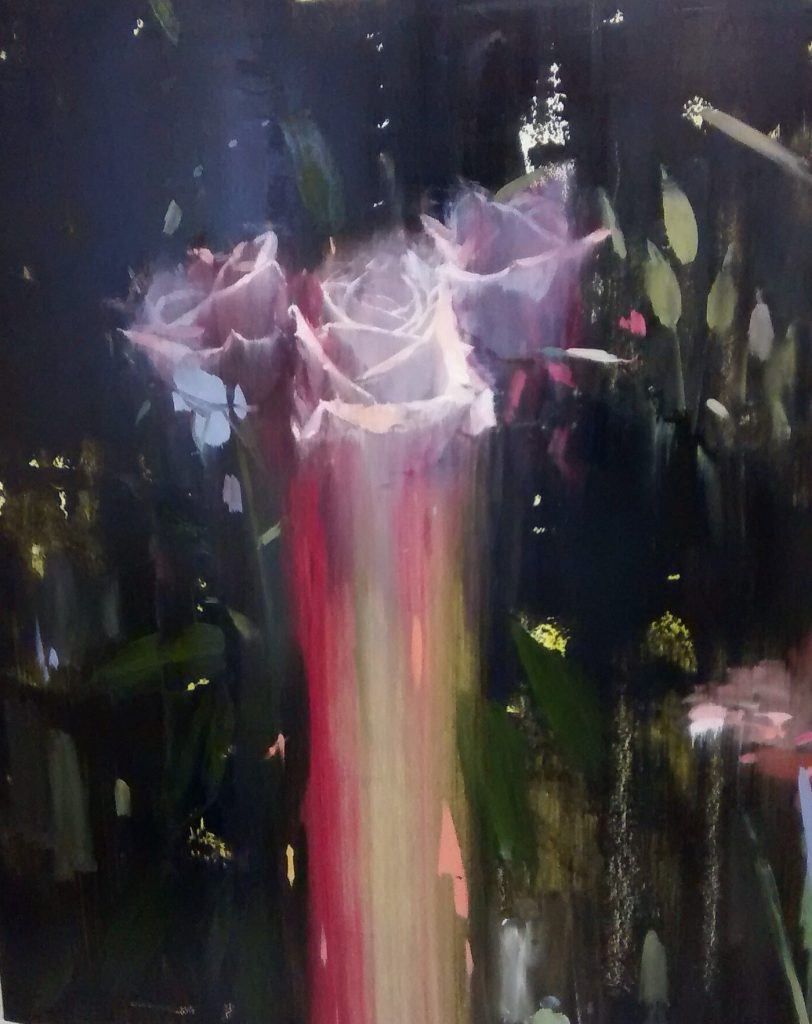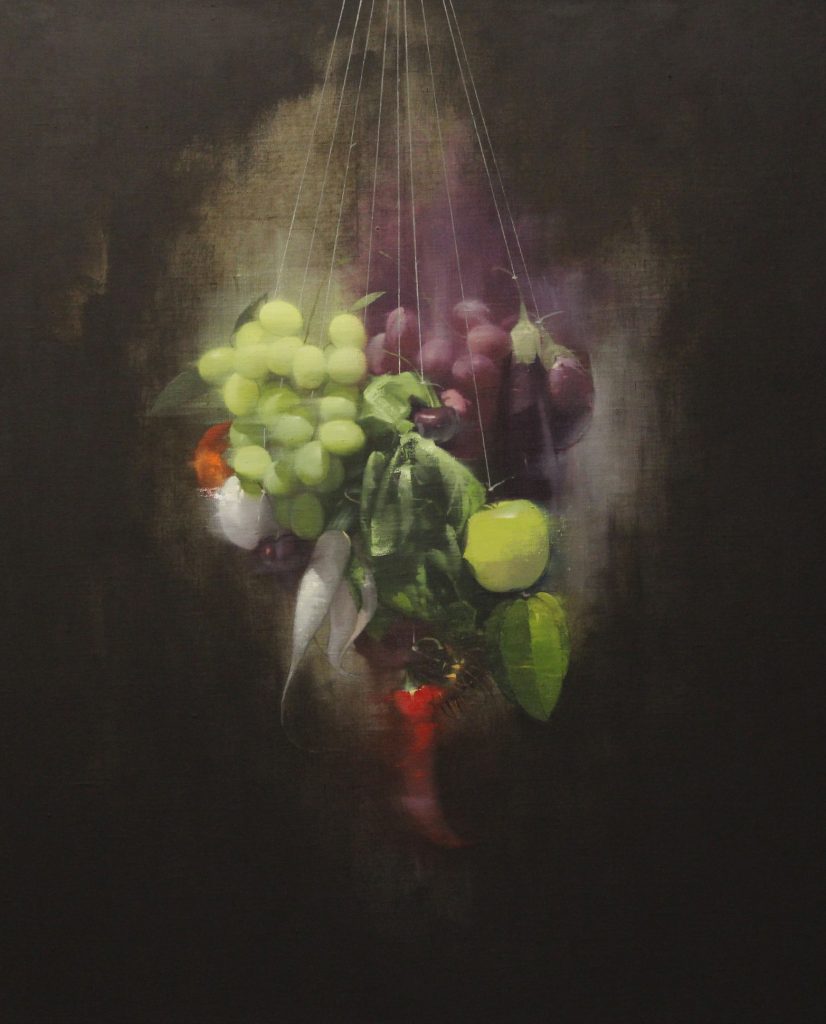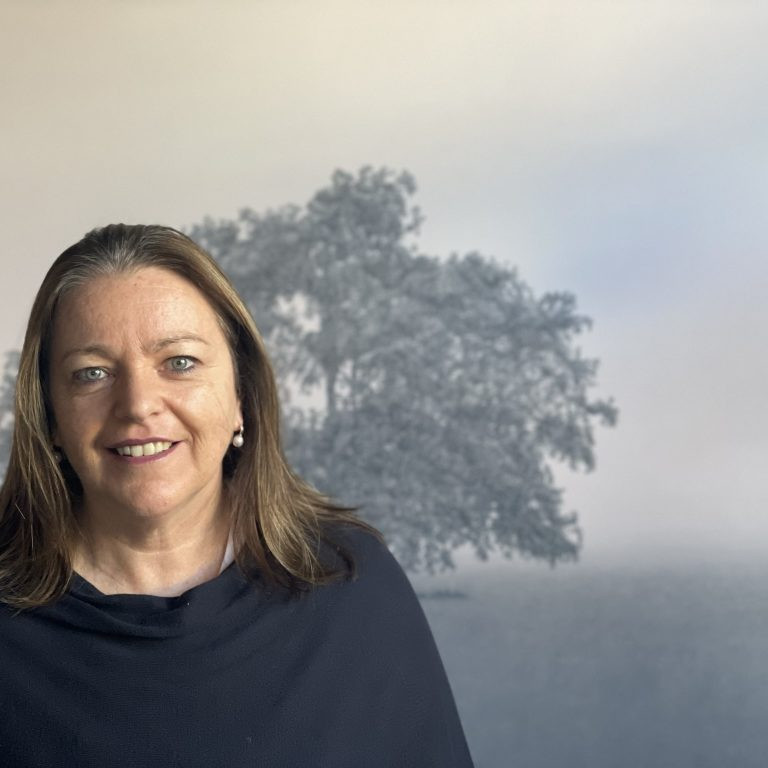Chris Kettle Painter - Brighton, UK.
What has been the importance of looking closely at old masters in relationship your own work?
Before I started referencing the Old Masters my Still Life were more formal, contemporary, sometimes even clinical so I think I was looking for the opposite of that – some 15 years ago there was very little dark and brooding Still Life around, it wasn’t something anyone was addressing so I found it incredibly inspiring rediscovering the Old Masters. I am always in awe of the beauty of their technique and poetic compositions. I can only really hope to capture a little of the spirit of those works, and yet try to remain contemporary in my own approach to painting.
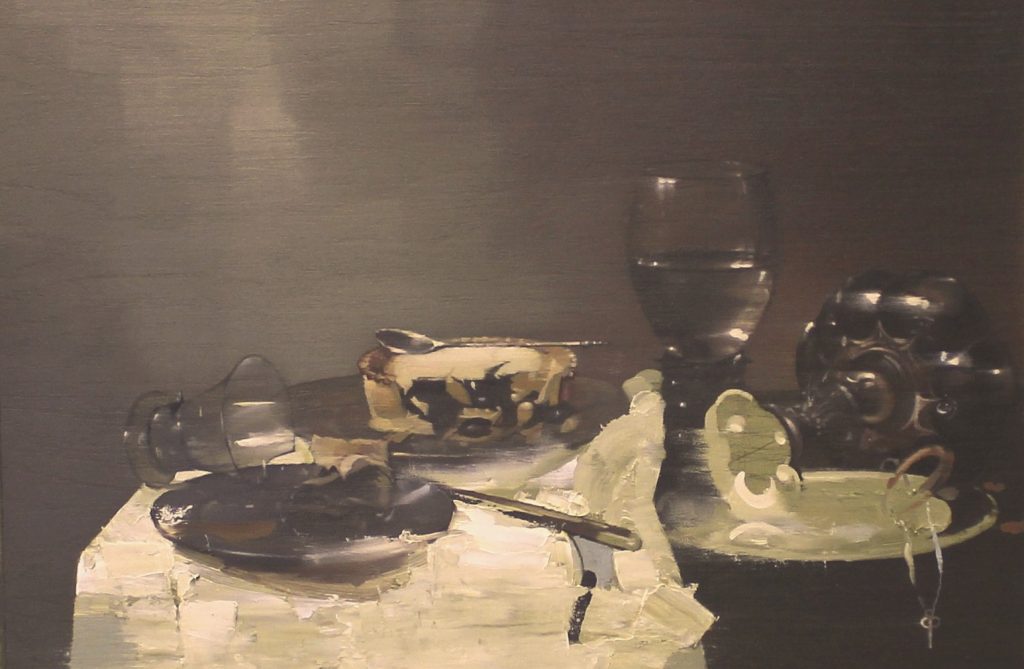
Still Life Study with Blackberry Pie – After Willem Calf
What details have lingered and lasted from your viewings of old masters’ still life paintings?
I think many details have lasted from viewing Old Masters such as Willem Calf and Jan Davidsz de Heem – oddly there is a lingering frustration that in many ways their paintings cannot really be improved upon – they are kind of untouchable and one has to make peace with the fact that in terms of pure painting, they can’t be bettered, only reexamined or ‘homaged’ as I call it. There’s a good reason for the continuing survival and popularity of these paintings, century after century.
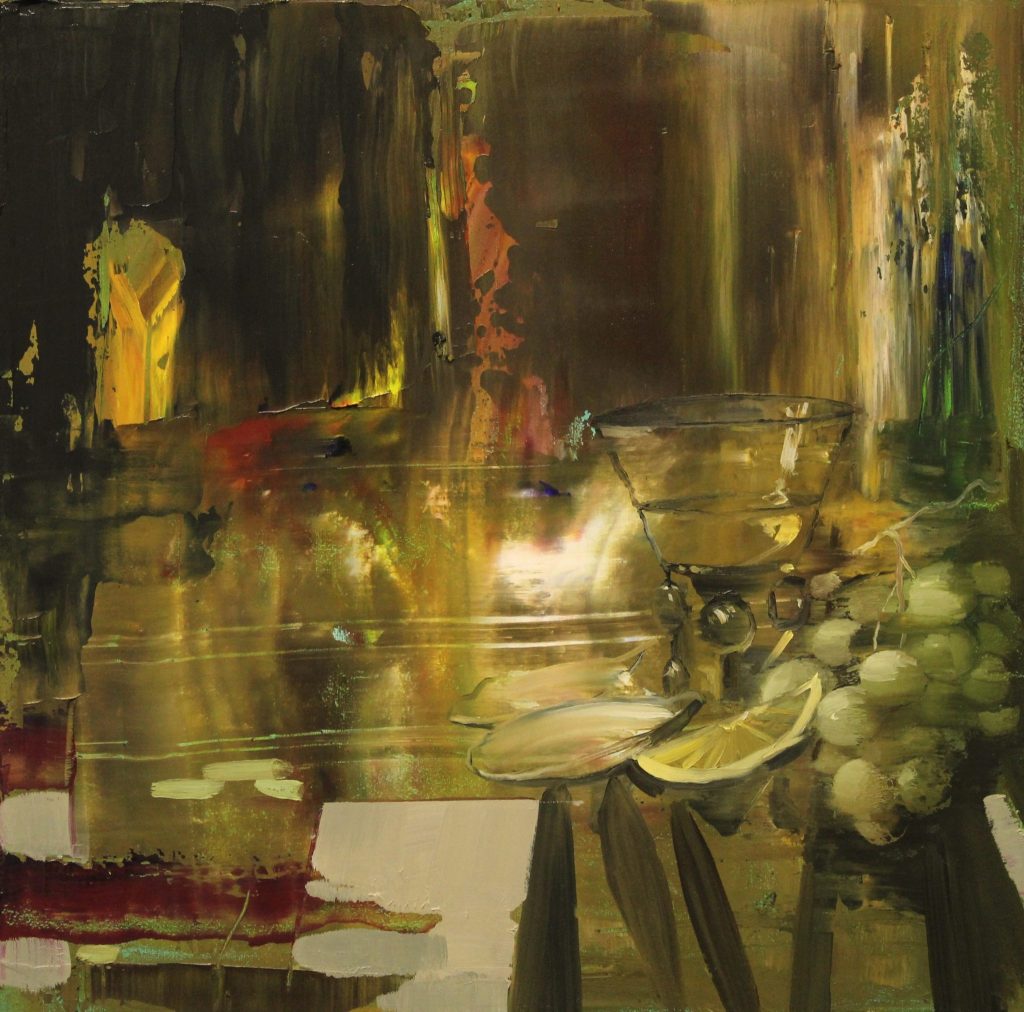
Still Life Study – After Jan Davidz De Heem
How do you set up for your still life work?
For my own arrangements such as the ‘Festoon’ series, I take a day to find the best items needed – (generally an ‘exotic’ fruit store!) and gradually arrange the subject matter and then photograph hundreds of images in various, different lights until I feel I have enough to work from.
Festoon #7
What lead you to consideration on Still Life Painting?
Well, I used to paint portraits – which I loved doing but I really found that Still Life challenged me personally a bit more, there was something about projecting human emotion onto inanimate objects that seemed almost absurd – I think I was sold at that point!
What techniques are you adding or adapting in your work currently?
For me even a tiny change can make a considerable difference – recently I started using broader, angled brushes again and my recent few paintings definitely have a different feel to them as a result. I’m also rediscovering raw Linen, I’m enjoying the texture and colour of it and allowing some of it show through the paint surface.
Both colour and light are a major aspect of your work, discuss.
Yes, I hope so… I am, definitely interested in the drama of painting when it comes to lighting – I don’t think I’ve been the same since seeing Caravaggio’s grapes, I also think that darker backgrounds in painting definitely lend themselves to this, the idea of light and colour penetrating the darkness, I find it a hopeful thing as a metaphor…
Still Life with Porcelain Jar – After Willem Calf
You also produce Limited Editions. Can you expand on this aspect of your work?
I know a few very good printers and I gradually drifted into it – I have to say! Over the years I’ve had to hone the instinct of picking paintings that would be popular enough to make print editions of – I still mostly only produce small editions mostly of 25, but never over 50, I think people appreciate the exclusivity of the smaller runs.
It’s also more agreeable to the buyers and collectors who may want to own an image that they love, yet the original painting may have sold already. Prints a generally a great thing to be able to offer as anotherform of art to run alongside the paintings.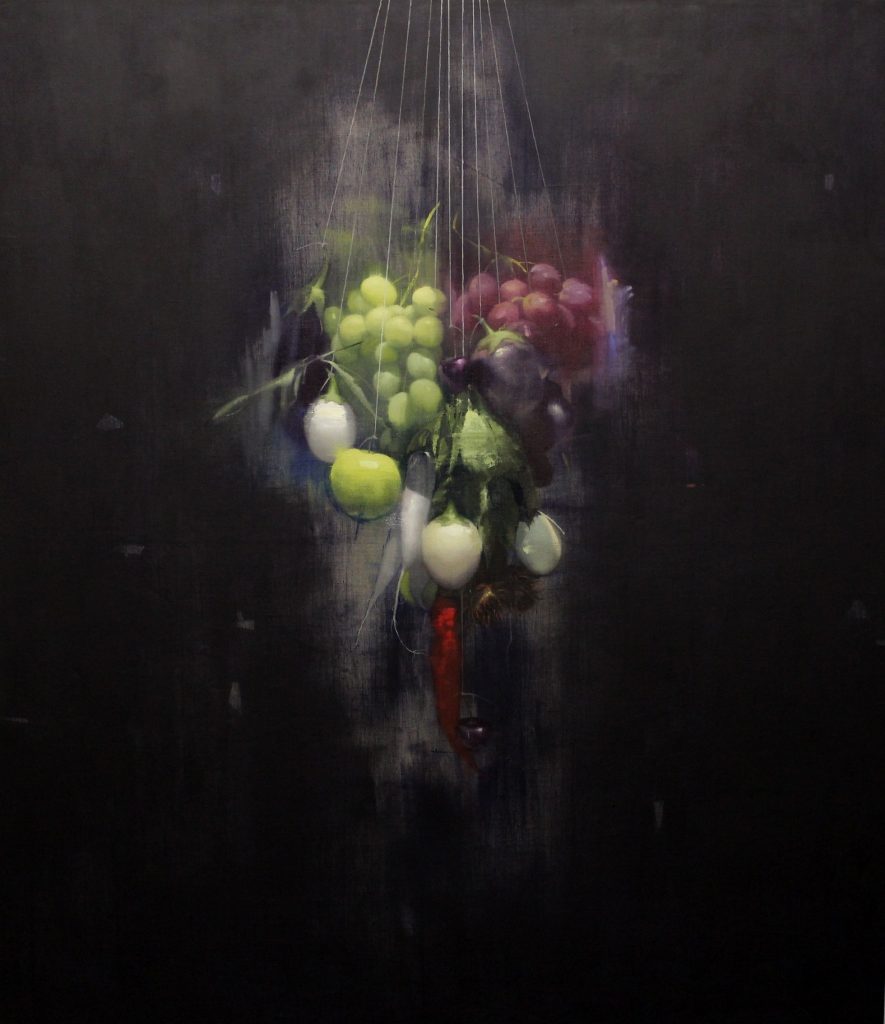 Festoon #8
Festoon #8
Discuss your shows / exhibitions that have been international.
The complexities of transporting your work.
To date I’ve been lucky enough to have been approached by Galleries who have arranged transport of works abroad, but I find it nerve-wracking leaving any paintings in the hands of anybody else and it is always a risk in terms of how couriers handle the Art, the best results have come from handing works to one courier who takes the work all the way to the country/gallery in question. I’ve learned that the problems arise when paintings are loaded and unloaded multiple times by unknown handlers!
Finding and working with international galleries
It’s difficult finding any galleries generally I think – I guess we have to be open, but it’s all about the right gallery who loves and believes in your work. I have a suspicion that Galleries would rather ‘discover’ artists, than the other way round – though everyone has their own approach to this.
The thrill of leaving your work sold in other countries
It’s definitely a real buzz leaving your work sold in another country! That’s real confirmation of the language of Art crossing boarders both, physically and culturally.
Explain the presentation of your finished work.
More recently, with my afore mentioned Oil on Linen paintings I have started to leave these particular pieces unframed – it’s about showing the Linen, allowing the surface to sneak through a little, and even the edges of the stretcher look great in their raw linen state. That is the way I choose to present them, but if a buyer wanted to enhance them again by framing, that’s fine.
I generally ‘tray frame’ all the study paintings, or works on Board, which are sometimes on 10mm thick panels – so they need more ‘presence’ – and framing gives that.
Take one of your floral paintings and discuss the layering of your work.
A recent more floral piece would be ‘Still life of Fruit & Flowers – After Huysum’ I think (Van) Huysum had a real eye for drama, and layers of subject matter.
Still Life of Fruit and Flowers 11
I really loved the direct light onto the pale Roses near the centre of the painting and then the gradual layering of flora and fruit working in harmony… Almost framing the Roses, which are clearly the stars of this piece, with accents provided by the red/orange punch of the surrounding carnation-like flowers.
Explain the difference between your ‘study pieces’ and paintings and the technology behind the terminology.
My ‘Study’ paintings are an avenue of my practice that have become really important to me in a few ways. They are generally more looser, freer paintings that sometimes allow me to experiment a bit more than the works on Linen or Canvas. I can literally have fun making these, without any pressure for them to be a perfect finished piece at the end – I don’t tend to make pencil sketches, so these are often my version of that – sketches in paint. With this free approach I think comes a kind of joy that can only be achieved if I am not always thinking of a perfect end result. They have become pretty popular over the last few years, and although the word itself ‘Study’ hints at ‘unfinished’ or an exercise, some of them are (in my humble opinion!) as good as the larger more accomplished works, yet also much more affordable.
Rose Study 11
Comment on the need for artists to understand the history to begin to break the rules.
I think it’s an advantage to know some of the history of art – although during my college years we barely covered the Dutch Masters – I guess it’s good to be exposed to as much art in our formative years as possible, it gives a sense of perspective of who we are and where we can go, as artists. I actually feel I have a pretty basic knowledge of Art History and tend to respond more instinctively than on any great academic level.
Festoon 9
But yes, to break or twist the rules, and to play with accepted traditions – you have to know a few of those rules…
Contact details:
Chris Kettle
Chris Kettle, Brighton, UK
Interview by Deborah Blakeley, July 2018
Think a colleague or friend could benefit from this interview?
Knowledge is one of the biggest assets in any business. So why not forward this on to your friends and colleagues so they too can start taking advantage of the insightful information the artist has given?
Other artists you may be interested in:


